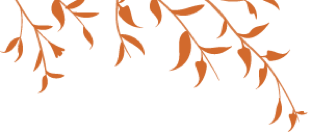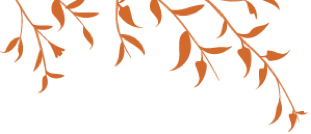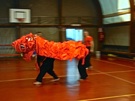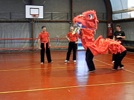UNICORN DANCE / LION / DRAGON
The dance of the Unicorn, Lion, Dragon finds its origins in the culture and traditions of China. It is, in fact, a popular tradition which is celebrated on the occasion of the Lunar New Year (Tet), or the Feast of the Moon (Tet Trung Thu) because these three animals considered sacred, are considered signs of great prosperity , happiness and peace of mind for families. This dance was born as a manifestation of good aupici of happiness and well-being of the people, it soon became a popular art and so 'over the years formed several schools that regularly, at dellle these festive occasions, competed in the various competitions for to conquer the primacy and the scepter in this discipline. The dance can be practiced with either one, two or rather with all three animals.
In the practice of this dance, can not miss the figure of "Ong Dia", a character from the benevolent big belly, and face always smiling dancing with the animals, playing with them and above all involves in a lively and playful children present the demonstrations.
From the legends, it was said that "Ong Dia" was the embodiment of "Duc Di Lac", the Buddha character very good and generous. "Of Duc Lac", noticing the appearance of a monster from the sea looking like a lion with a large horn in the middle of the head (with Lan), who brought terror and destruction to the people, incarnated in "Ong Dia "and went down to the ground to help the poor peasants brought with him the" linh chi ", a kind of magical herb grown only in the high mountains. With great skill and dexterity made her eat the grass magical unicorn and so 'able' to finally subdue him, transforming it in such a way that carnivore herbivore. Later, "Duc Di Lac" took him to his residence in the high mountains to be able to teach and instruct. Since then, in order to commemorate this event with a happy end, each year on the feast of the head of the year, "Ong Dia" came down from the mountain again with his "with Lan" now domesticated, to bring the best wishes of happiness, peace and prosperity for families.
There are several ways in the dance of the Unicorn:
“Doc chiem ngao dau” = One "with Lan" dance and show all his strength and his acrobatic skills through big jumps on top and in the long, therefore, represents the courage, impersonalizza the grand hero from the immense and boundless capacity combative. E 'therefore the symbol of the "thai cuc" or extreme polarity that led to the bipolar "Yin and Yang".
“Song hi” = Two "with Lan" dance together, complement one another, creating around them a climate of harmony, serenity and happiness. They represent, therefore, the image of the great energy balance between the Yin and Yang, which translates perfectly through our everyday reality that is the balance between Men and Women, the alternation of day and night, the Sun and the Moon ...
“Tam Tinh” = Three "with Lan" yellow, red, black dance together and express three wishes more 'recurrent people: Luck, Prosperity, Longevity (Phuc Loc Tho).
“Tu quy hung long” = Four "with Lan" white, yellow, red, black (or green) express the colors and the alternation of the four seasons, and wish good wishes for all four seasons.
The lion dance differs from that of 'unicorn for the fact that the Lion does not have the horn in the middle of the head and the dancers are completely inside the dress of Leo.
The Dance of the Dragon was born much later than the Unicorn and Lion appears and the first few times around the years 1944-1945 in the Chinese communities in Viet Nam. The body of the dragon, unlike the other two of his ancestors, and 'much more' long and therefore 'is governed by different dancers, from a minimum of 6 even up to 20-30 people.












